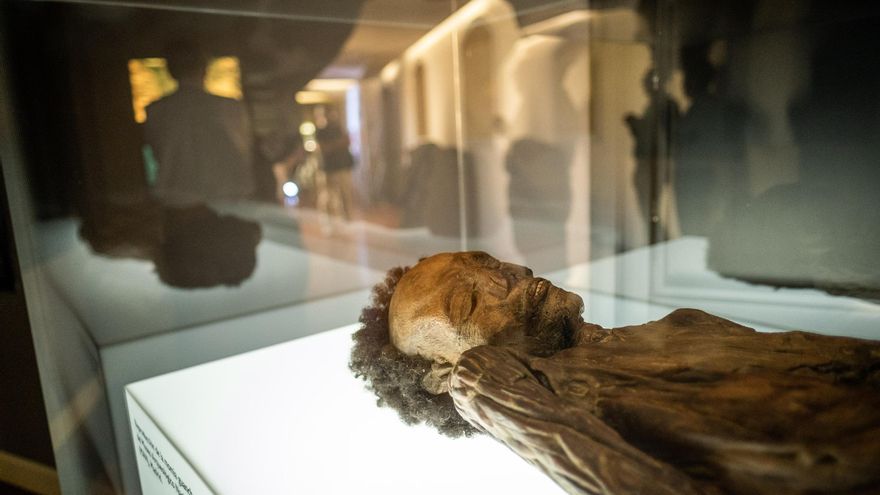
A delegation from the Tenerife Cabildo will meet with the Secretary of State for Culture, Jordi Martí, next week to discuss the possibility of bringing the ‘Erques mummy’ back to the island, which is currently housed at the National Archaeological Museum.
This was announced during a press conference by the Tenerife president, Rosa Dávila, who endorsed the “over 30 years of accumulated experience” in conservation and the “outstanding team” of researchers and conservators at the MUNA (Museum of Nature and Archaeology) to preserve the mummy.
[–>She praised the Ministry’s “willingness” to engage in dialogue on this matter, calling it a “thread of hope,” emphasizing that this mummy, the best-preserved in the world, “is a symbol of identity as a Canary Islander with infinite historical and cultural value.”
She also highlighted the “support” from the Canary Islands Government in these negotiations and reiterated that there is “no longer any justification” claiming lack of conditions for preservation or transportation, pointing out that mummies have been brought to the island from Argentina.
“This is where the mummy of Tenerife belongs. It’s a matter of justice, not only cultural but we believe this is where the mummy should be, because it is Tenerife’s heritage, I repeat, and it must be in Tenerife”, she emphasised.
José Carlos Acha, the Culture Councilor of the Cabildo de Tenerife, noted that “the mummy must be once again contextualised in its culture, in its geographical and cultural environment,” and the MUNA “has demonstrated technological capacity with a high number of conservators and techniques ensuring perfect mobility for exhibition.”
He mentioned the ability to control humidity, lighting, the appearance of mites, smoke, or any type of insects through filters in specially armored chambers to prevent any damage.
The Director of the Tenerife Archaeological Museum and the Canarian Institute of Bioanthropology, Conrado Rodríguez, commented that the transfer of this mummy has been requested since 1976, highlighting the “contradiction” that in 2011 three other mummies were brought from Madrid “without any issue nor objection to come.”
The MUNA team is “top-notch”
Similarly to Dávila, he appreciated the Ministry’s “willingness” to open a “dialogue” and simultaneously defended the quality of the MUNA’s conservation team, which is “top-notch” and a “world reference” in mummy conservation and exhibition.
There are still approximately a dozen Guanche mummies scattered around the world.
For instance, there is one in Canada and another in Havana (Cuba), initially mistaken for a Peruvian miner but in 2018, it was proven to be Guanche. In Europe, they are located in St. Petersburg, Austria, Vienna, or Cambridge, “which also have unique features, with incisions on the buttocks, thighs, and some parts of the abdomen where sand was inserted,” Conrado explained.
Aside from the one in Madrid, several are spread across different institutions in Paris and Göttingen’s mummy, “an extraordinary specimen,” with a conservation quality similar to the one in Madrid.
‘The Erques mummy’ was recovered from a cave in the Erques ravine, Tenerife, in 1763 and is believed to belong to the large sepulchral cave where hundreds were found in the late 18th century.
It is one of the five Guanche mummies housed at the National Museum of Anthropology in Madrid in the 1970s.
However, it was transferred to the National Archaeological Museum when the others returned to Tenerife.
















